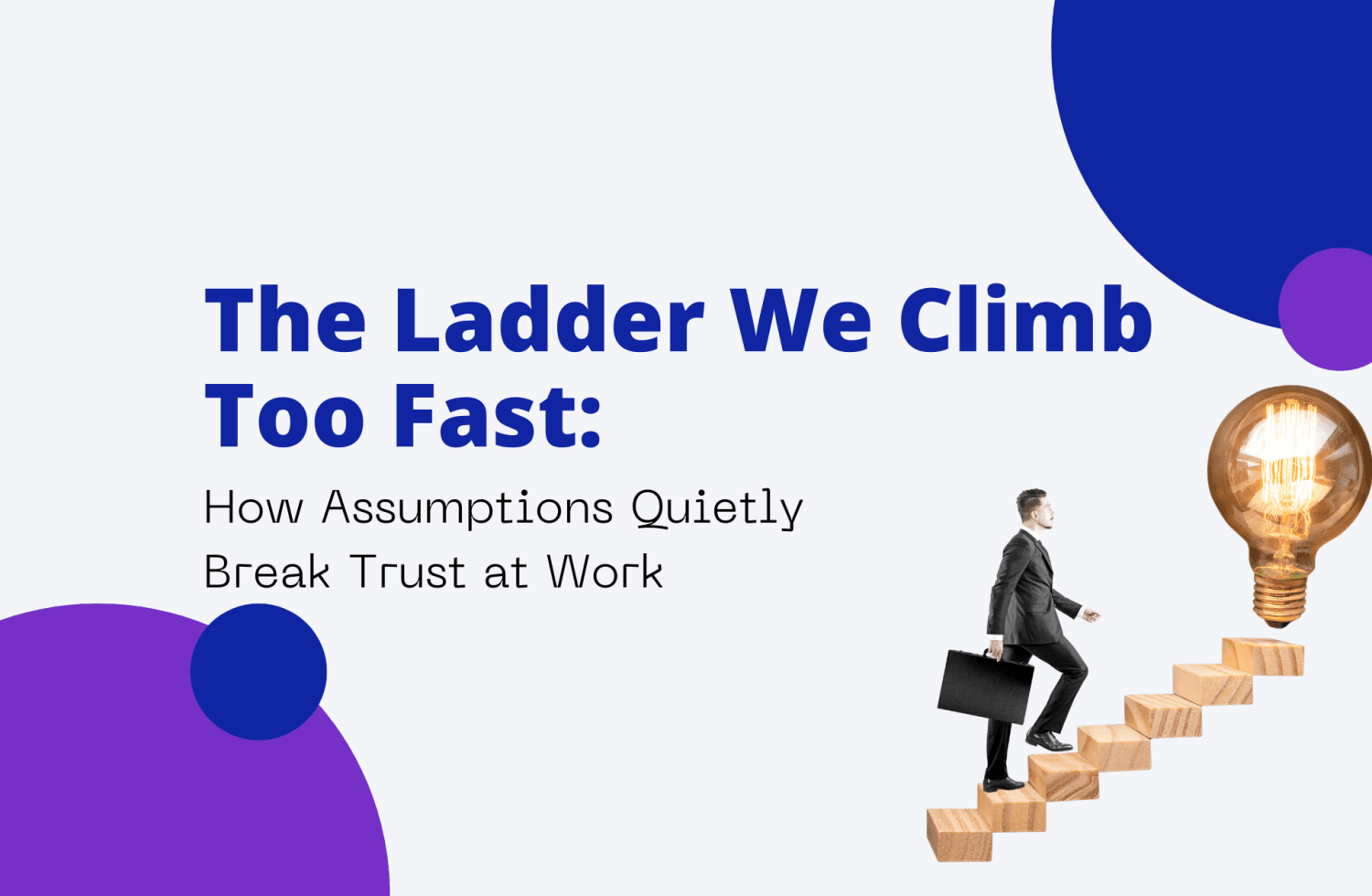Click Here to Download the PDF.
Most one-on-ones feel like a formality.
You log into the call, say a few polite things, talk about what’s “on track,” nod about next steps that never happen—and walk away thinking,
“What was the point of that?”
The problem isn’t that one-on-ones are bad.
It’s that they’re wasted.
When done well, a one-on-one can be the most valuable 30 minutes of your week.
It’s where real blockers come up, where decisions actually get made, and where trust gets built over time.
But that only happens when you structure them with care.
When both people show up on purpose.
And when follow-through isn’t just a checkbox—it’s part of the culture.
This isn’t about adding more meetings or finding a better template.
It’s about making the small conversations matter again.
So here’s a 5-part system—based on real work, real teams, and real results—to help you do exactly that.
Why So Many One-on-Ones Go Nowhere
Let’s just say it: most people aren’t taught how to run a great one-on-one.
They know it’s important.
They’ve heard that communication is key.
But no one explains what that actually looks like.
So what happens?
Managers rush in unprepared.
Employees show up unsure what to say.
The meeting turns into a vague check-in or an aimless status update.
Both people leave frustrated—or worse, indifferent.
And over time, those 30 minutes stop being useful.
You stop addressing what matters.
You stop getting clarity.
And you start missing the early warning signs—low morale, burnout, confusion, disengagement—that could’ve been fixed if someone had just asked the right question.
That’s not a meeting problem. That’s a structure problem.
What you need isn’t a longer meeting.
You need a better way to use the time you already have.
The 5-Part Structure That Makes Every One-on-One Count
This system breaks the one-on-one down into five core elements—each designed to shift the conversation from passive to powerful.
And unlike most advice, this works for both managers and employees.
1. Before the Meeting — Set the Stage for Something Real
The work starts before the conversation begins.
If you’re just showing up and winging it, the meeting’s already halfway off the rails.
If you’re a manager:
- Share the agenda ahead of time. A simple, “What’s on your mind this week?” gives the other person a chance to think.
- Look over recent goals, blockers, or feedback trends. Write down two focused questions that matter.
- Protect this time like it matters. Don’t reschedule. Don’t multitask. Show up fully, with attention and intention.
If you’re an employee:
- Bring three things: one win, one blocker, and one big focus topic.
- Add some receipts. Whether it's a link, an update, or a number—show what’s actually happening.
- Choose one area you want to improve. Share it early. It gives your manager a clear place to support you.
Why it works:
This isn’t about being over-prepared. It’s about both people showing up with purpose. That alone shifts the entire tone of the meeting.
2. During the Meeting — Keep It Honest and Useful
A one-on-one isn’t about updating your boss on what’s “going fine.”
It’s the one time each week where you should be able to say,
“This is what I need. This is what’s not working. And this is where I’m stuck.”
If you’re a manager:
- Start with the human. Ask how they’re doing—not just what they’re doing.
- Don’t just listen for updates. Listen for signals. Ask, “What’s in your way right now?” instead of “How’s it going?”
- Pick one blocker. Commit to helping solve it. And set a date to check back in.
If you’re an employee:
- Drive the agenda. Come in with a focus, not just a report.
- Ask for clarity. Ask for feedback. Ask for what you need to move forward.
- Define what “done” actually looks like for your top priorities. That one step avoids weeks of confusion.
What shifts:
When both sides show up ready to say something real, you stop wasting time repeating tasks—and start solving real problems.
3. After the Meeting — Follow Through or Fall Flat
A great conversation means nothing if it lives and dies in someone’s notebook.
What happens after the meeting decides whether any of it mattered.
If you’re a manager:
- Send a simple three-bullet recap: what you talked about, what decisions were made, and who’s doing what by when.
- Take your own action items seriously. If you don’t follow through, why would they?
- Recognize a win—doesn’t matter if it’s big or small. Public or private. Just say something.
If you’re an employee:
- Turn your notes into next steps. Don’t let clarity fade by the next morning.
- Drop a quick update midweek. Doesn’t need to be long—just share what’s moving and where you’re stuck.
- If something’s off, don’t sit on it. Come back with a clear ask and at least one idea.
Why this part matters most:
Trust is built in what people do after they say the right thing. Not in the saying itself.
4. Every Month — Zoom Out and Actually Grow
Weekly check-ins keep things from falling apart.
Monthly zoom-outs make sure you’re building the right things in the first place.
If you’re a manager:
- Ask: “What’s next for you?” Not where they are, but where they want to go.
- Offer one stretch opportunity with clear expectations. Growth without clarity is a trap.
- Reset the quarter together. Ask what’s working, what’s unclear, and what needs to change.
If you’re an employee:
- Try one new habit, tool, or approach this month. Share what worked.
- Bring up a system-level idea that could help your team—not just a personal complaint.
- Suggest one process to test, and follow up with results. It shows initiative and builds trust.
Why it works:
Growth happens when you zoom out—when you stop reacting and start designing your path forward.
5. What to Say — Real Language That Moves Things Forward
People don’t remember everything you said.
But they remember how they felt walking out of that meeting.
That’s why language matters.
What managers can say:
- “Here’s what I’m seeing—does that feel right on your end?”
- “Is there one thing holding your progress back that I’m not seeing?”
- “If one part of your week had more support, what would it be?”
What employees can say:
- “Here’s what’s going well—and here’s one thing that’s still in the way.”
- “What’s one shift I can make that would actually help you or the team?”
- “I have an idea to improve this—can I test it and share what I learn next week?”
This language works because it creates clarity without creating fear.
It opens the door to real feedback, better ideas, and more honest conversations—without turning every one-on-one into a performance review.
Real Workplace Example: The One Sentence That Changed the Meeting
Let me share what this looked like in the real world.
A product team I worked with was holding weekly one-on-ones, but they weren’t getting anywhere.
Deadlines slipped. Communication was vague.
The manager said the employee seemed disengaged.
The employee said they felt micromanaged.
Neither trusted the other to speak up.
For six weeks, they had the same 30-minute call, repeating the same surface-level updates.
No blockers were removed. No changes were made.
And underneath it all, both felt stuck—but had no structure for moving forward.
We introduced this five-part system, piece by piece.
- The manager began sharing an agenda 24 hours in advance, with two focused questions.
- The employee started each meeting with one win, one blocker, and one goal.
- They started using phrases like, “Here’s what I’m seeing—how does that feel?”
- By week three, they introduced a shared doc to track all decisions and deadlines.
- In their first monthly zoom-out, the employee said: “I’m spending six hours a week fixing broken handoffs from another team. That’s why I’m missing my deadlines.”
That one sentence shifted everything.
The manager reassigned that work within days.
Deadlines were met the next week.
And for the first time in months, the one-on-one wasn’t tense.
It was useful.
Go Deeper: The Best Tools, Talks, and Resources to Use Now
If you’re ready to put this system into action, these are the best-rated resources I’ve found—based on research, relevance, and real-world application.
Best Book:
Glad We Met: The Art and Science of 1:1 Meetings by Steven Rogelberg, PhD
One of the most respected voices in organizational psychology, Rogelberg breaks down how to design meaningful, intentional one-on-ones that actually work. Backed by research. Full of practical steps.
Best TED Talk:
“The Power of You to Truly Make Meetings Work” by Steven Rogelberg
This talk focuses on designing meetings that drive action, trust, and engagement—without wasting time. A perfect 15-minute starting point for anyone wanting to rethink their meeting culture.
Best Tool:
Fellow
A purpose-built platform for one-on-ones that includes shared agendas, templates, note-taking, and follow-up tracking. If you’re serious about applying this system, this tool makes it easy to operationalize.
The Small Moments That Build Big Trust
What you do in a one-on-one tells someone exactly how much you care.
It’s not about being perfect.
It’s not about having the right answers every time.
It’s about showing up, again and again, in a way that says:
You matter.
Your work matters.
And we’re figuring it out—together.
People don’t disengage because of one bad project.
They disengage because no one asked.
Because every time they hinted at a problem, nothing changed.
One-on-ones are your chance to change that.
To be the kind of manager people remember.
To be the kind of employee who speaks up, shows up, and helps shape the team—not just follow it.
They’re not just meetings.
They’re moments where trust is either built—or broken.
And when they’re done right, they don’t just help the work.
They help people feel like they actually matter.
Download the Infographic That Puts It All Into Action
Want a simple, visual version of everything in this article?
You can download the full “One-on-Ones That Work” infographic as a printable PDF.
It includes:
- The full 5-part structure
- Prep checklists for both sides
- Action steps after every meeting
- Scripts that help real conversations happen
Perfect for your next one-on-one—or to share with your team.




